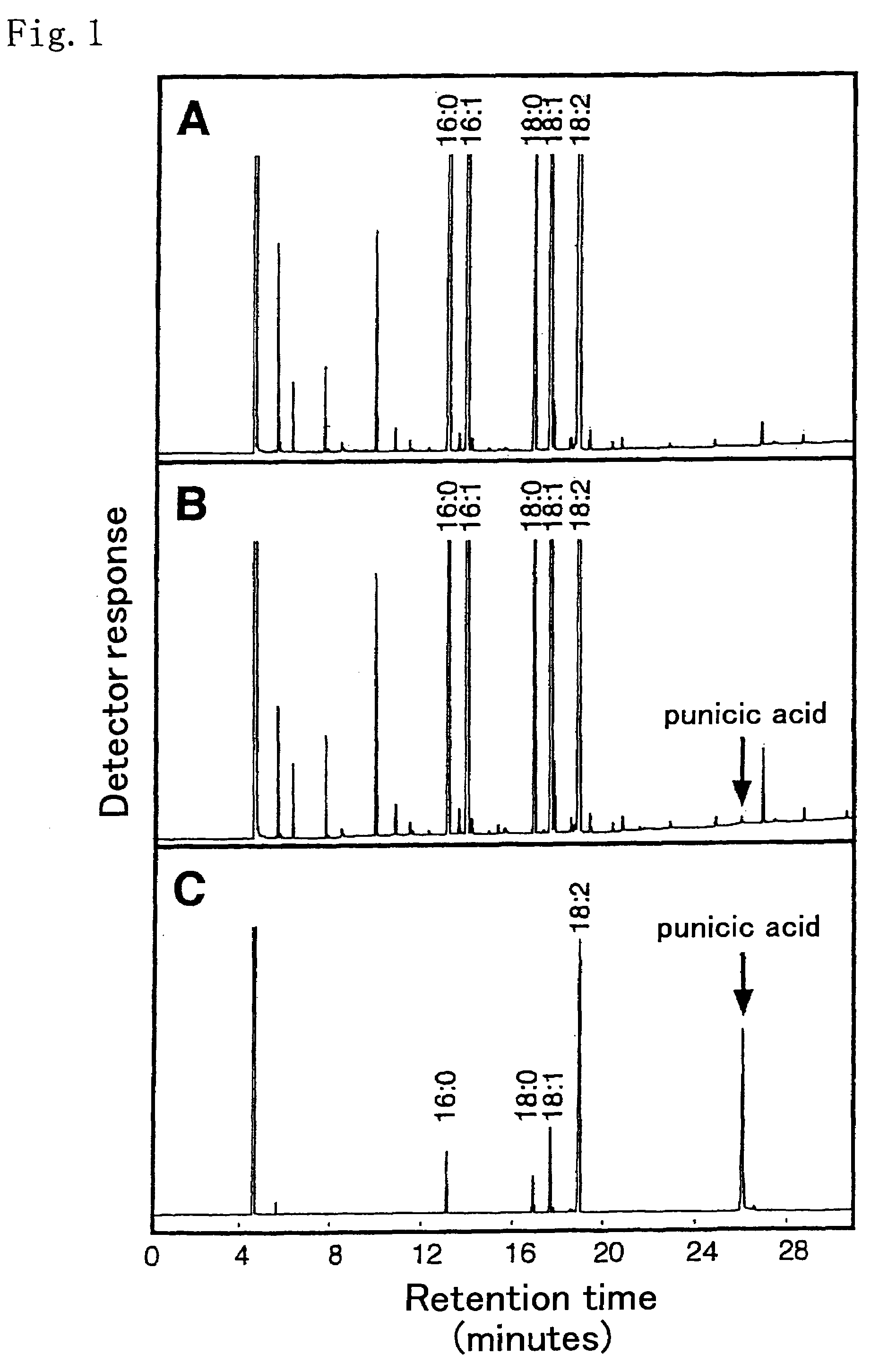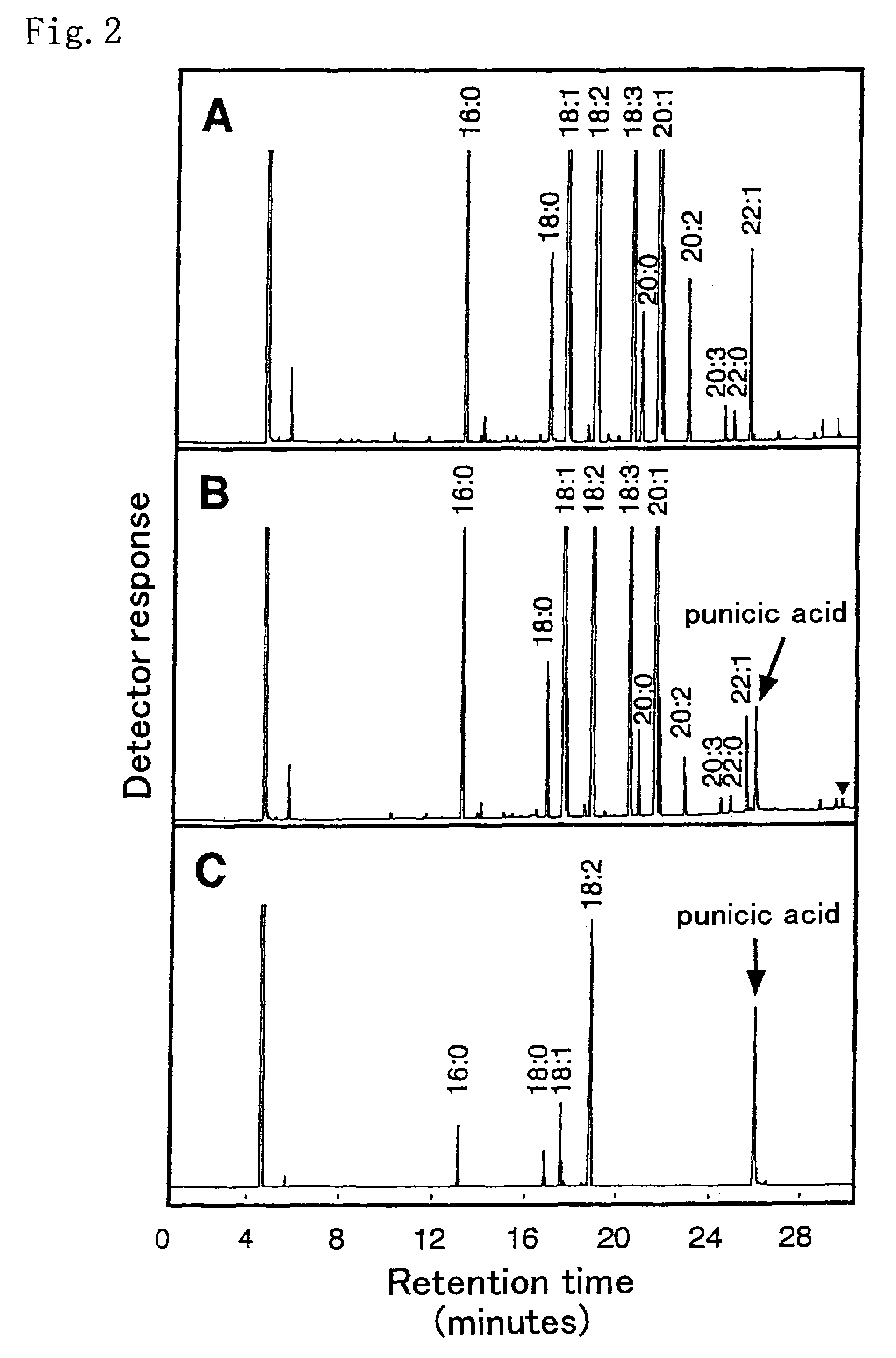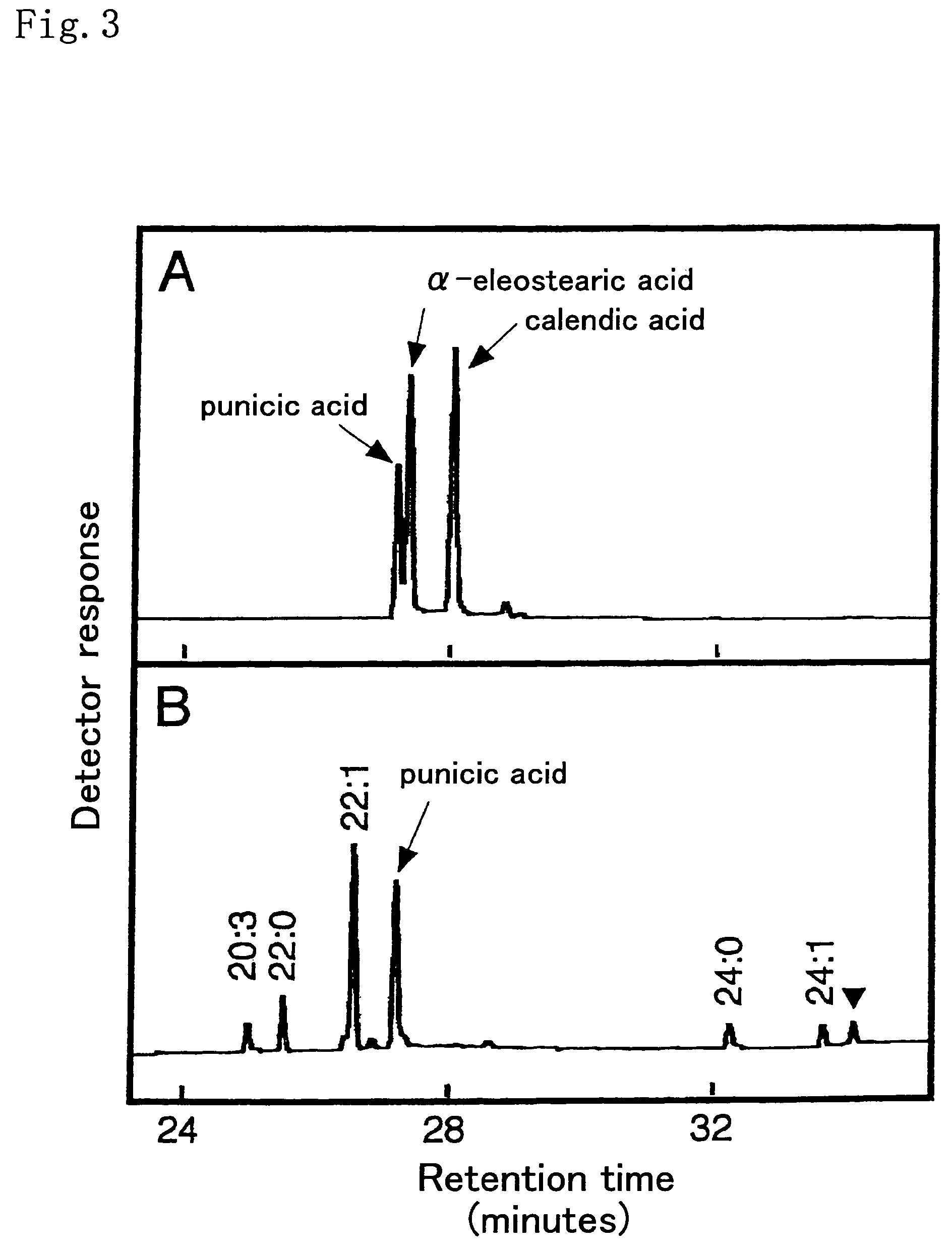Genes participating in the synthesis of fatty acid having trans-11-,cis-13-conjugated double bond and utilization thereof
a technology of fatty acids and genes, applied in the field of genes involved in the synthesis of fatty acids having trans11, cis-13 conjugated double bonds, and a vector and transformant comprising the gene, can solve the problems of low amount of oil recovered from seeds, low content, and difficulty in obtaining a sufficient amount of seeds, etc., and achieve the effect of increasing the conten
- Summary
- Abstract
- Description
- Claims
- Application Information
AI Technical Summary
Benefits of technology
Problems solved by technology
Method used
Image
Examples
example 1
Trichosanthes kirilowii Conjugase
(1) Isolation of RNA from Trichosanthes kirilowii
[0166]Trichosanthes kirilowii immature seeds that started to accumulate a conjugated triene fatty acid, punicic acid, were collected, and the seeds were used as materials for isolating total RNA. As described in Molecular Cloning, there are various methods of preparing total RNA, including the guanidine hydrochloride method. Of those methods, the phenol-chloroform method (Arabidopsis Protocols, Methods in Mol. Biol. 82, p. 85-89 Humana Press) was applied in the present example. That is, approximately 4 g of the immature seeds was added to liquid nitrogen in a mortar, and the mixture was fully crushed and then transferred into 50 ml tubes. 7 ml of an extract solution (0.4 M LiCl, 25 mM EDTA, 1% SDS, 0.2 M Tris buffer solution (pH 9.0)) and 7 ml of phenol saturated with water treated with diethylpyrocarbonate (DEPC) were added to each tube, followed by stirring with Vortex. The obtained mixture was cent...
example 2
Punica granatum Conjugase
(1) Isolation of RNA from Punica granatum
[0192]Punica granatum immature seeds that started to accumulate conjugated triene fatty acid, punicic acid, were collected, and the seeds were used as materials for isolating total RNA. As described in Molecular Cloning, there are various methods of preparing total RNA, including the guanidine hydrochloride method. Of those methods, the phenol-chloroform method (Arabidopsis Protocols, Methods in Mol. Biol. 82, p. 85-89 Humana Press) was applied in the present example. That is, approximately 0.6 g of the immature seeds from which the seed coats were removed was mixed with liquid nitrogen in a mortar, and the mixture was fully crushed and then transferred into 15 ml tubes. 1.8 ml of an extract solution (0.4 M LiCl, 25 mM EDTA, 1% SDS, 0.2 M Tris buffer solution (pH 9.0)) and 1.8 ml of phenol saturated with water treated with diethylpyrocarbonate (DEPC) were added to each tube, followed by stirring by Vortex. The obtain...
PUM
| Property | Measurement | Unit |
|---|---|---|
| culture temperature | aaaaa | aaaaa |
| culture temperature | aaaaa | aaaaa |
| temperature | aaaaa | aaaaa |
Abstract
Description
Claims
Application Information
 Login to View More
Login to View More - R&D
- Intellectual Property
- Life Sciences
- Materials
- Tech Scout
- Unparalleled Data Quality
- Higher Quality Content
- 60% Fewer Hallucinations
Browse by: Latest US Patents, China's latest patents, Technical Efficacy Thesaurus, Application Domain, Technology Topic, Popular Technical Reports.
© 2025 PatSnap. All rights reserved.Legal|Privacy policy|Modern Slavery Act Transparency Statement|Sitemap|About US| Contact US: help@patsnap.com



